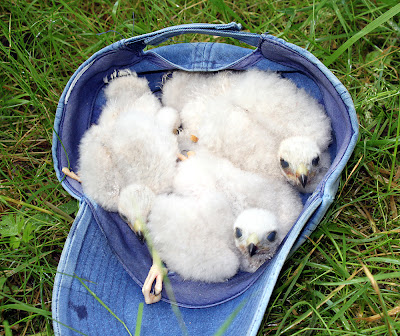I was hoping for a harrier at Pilling today after the wind dropped and the overnight and then early rain made for a warm, muggy morning fit for a raptor or two – maybe the Montagu’s down from the rainy Pennine fells?
No harriers appeared but patrolling the sea wall briefly was an early season Short-eared Owl, down from the fells. It looked like a juvenile, very bright and orangey in the wings, even for a “shorty”. The owl was in the air for a minute or two before it dropped into a distant ditch and I didn’t see it again. Two other raptors today were an obligatory Kestrel, and then a Peregrine which came from the Knott End direction before heading inland as then in the distance, it turned right and south again.
Short-eared Owl
Otherwise there’s little news to report: 2 Blackcap, 2 Reed Warbler, 18 Linnet, 8 Greenfinch, 2 Pied Wagtail, 6 Meadow Pipit, 2 Corn Bunting, 6 Skylark, 1 Common Sandpiper, 2 Little Grebe, 3 Grey Heron.
Greenfinch
A large count of Curlew for 19th July –over 700 birds Lane Ends/Pilling Water. Still low numbers of Swallows this morning with less than 15 birds around and then a sudden but definite west and south movement of 30+ individuals about 11am.
Back home I turned my attention to the garden where Goldfinches come and go, and at last a few juveniles. Out of 7 Goldfinch caught in a few hours, six were “3J” type and one an earlier season but juvenile female losing its mottled 3J markings. A couple more juvenile Greenfinch caught too, and fingers crossed, no sign of the dreaded thrichomonosis in the garden this year.
Goldfinch - "3J"





















































.jpg)












